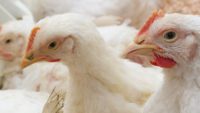USDA confirms HPAI in two non-commercial backyard flocks (non-poultry) in Arizona and South Carolina
State officials quarantined the affected premises, and birds on the properties will be depopulated to prevent the spread of the disease.

The United States Department of Agriculture’s Animal and Plant Health Inspection Service confirmed the presence of highly pathogenic avian influenza (HPAI) in two non-commercial backyard flocks (non-poultry) in Yavapai County, Arizona and Beaufort County, South Carolina.
Samples from the Arizona flock were tested at the Arizona Veterinary Diagnostic Center and samples from the South Carolina flock were tested at the Clemson Veterinary Diagnostic Center, both part of the National Animal Health Laboratory Network. The cases were confirmed at the APHIS National Veterinary Services Laboratories in Ames, Iowa.
APHIS is working closely with state animal health officials in Arizona and South Carolina on joint incident responses. State officials quarantined the affected premises, and birds on the properties will be depopulated to prevent the spread of the disease. Birds from the flocks will not enter the food system.
According to the U.S. Centers for Disease Control and Prevention, the public health risk associated with these avian influenza detections in birds remains low. As a reminder, the proper handling and cooking of all poultry and eggs to an internal temperature of 165 ˚F is recommended as a general food safety precaution.
As part of existing avian influenza response plans, federal and state partners are working jointly on additional surveillance and testing in areas around the affected flocks. The United States has the strongest AI surveillance program in the world, and USDA is working with its partners to actively look for the disease in commercial poultry operations, live bird markets and in migratory wild bird populations.
Anyone involved with poultry production from the small backyard to the large commercial producer should review their biosecurity activities to assure the health of their birds. APHIS has materials about biosecurity, including videos, checklists, and a toolkit available at: https://www.aphis.usda.gov/aphis/ourfocus/animalhealth/animal-disease-information/avian/defend-the-flock-program/dtf-resources/dtf-resources.
USDA will report these findings to the World Organisation for Animal Health (WOAH) as well as international trading partners. USDA also continues to communicate with trading partners to encourage adherence to WOAH standards and minimize trade impacts. WOAH trade guidelines call on countries to base trade restrictions on sound science and, whenever possible, limit restrictions to those animals and animal products within a defined region that pose a risk of spreading disease of concern. WOAH trade guidelines also call on member countries to not impose bans on the international trade of poultry commodities in response to notifications in non-poultry.
APHIS will continue to announce the first case of HPAI in commercial and backyard flocks detected in a State but will not announce subsequent detections in the State. All cases in commercial and backyard flocks will be listed on the APHIS website at https://www.aphis.usda.gov/aphis/ourfocus/animalhealth/animal-disease-information/avian/avian-influenza/2022-hpai.
In addition to practicing good biosecurity, all bird owners should prevent contact between their birds and wild birds and report sick birds or unusual bird deaths to State/Federal officials, either through their state veterinarian or through APHIS’ toll-free number at 1-866-536-7593. APHIS urges producers to consider bringing birds indoors when possible to further prevent exposures. The Animal Health Protection Act authorizes APHIS to provide indemnity payments to producers for birds and eggs that must be depopulated during a disease response. APHIS also provides compensation for disposal activities and virus elimination activities. Additional information on biosecurity for backyard flocks can be found at http://healthybirds.aphis.usda.gov.
Additional background
Avian influenza (AI) is caused by an influenza type A virus which can infect poultry (such as chickens, turkeys, pheasants, quail, domestic ducks, geese, and guinea fowl) and is carried by free flying waterfowl such as ducks, geese and shorebirds. AI viruses are classified by a combination of two groups of proteins: hemagglutinin or “H” proteins, of which there are 16 (H1–H16), and neuraminidase or “N” proteins, of which there are 9 (N1–N9). Many different combinations of “H” and “N” proteins are possible. Each combination is considered a different subtype and can be further broken down into different strains which circulate within flyways/geographic regions. AI viruses are further classified by their pathogenicity (low or high)—the ability of a particular virus strain to produce disease in domestic poultry.
Source: USDA APHIS
Looking for a reprint of this article?
From high-res PDFs to custom plaques, order your copy today!




.jpg?height=200&t=1670643738&width=200)


